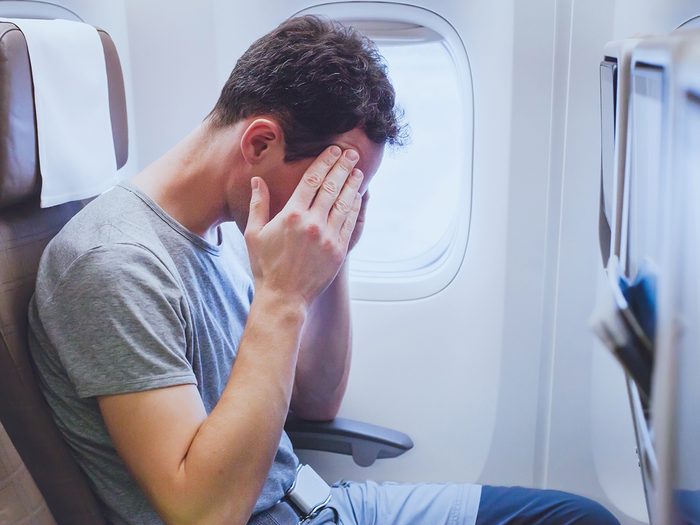
The Science Behind Motion Sickness
If you’ve ever felt nauseous at the back of a bus or woozy after a boat cruise, then you’ve experienced motion sickness. The condition’s most common symptoms are dizziness, increased salivation, headaches, sweating, burping and vomiting.
Humans haven’t always experienced this reaction. According to Fred Mast, a professor who studies multisensory integration at the University of Bern, motion sickness began to affect us when we created vehicles for getting places faster. “Our bodies were not prepared for it,” he says, explaining that human-made acceleration creates a disturbance between our vestibular system, which is responsible for controlling balance, and our vision.
While travelling on a boat or in a car, you may not be watching the movement of the vehicle, but your vestibular system registers it. Since the human brain has not evolved enough yet to resolve that conflict, it causes motion sickness—and it doesn’t take a lot of speed to trigger the disruption.
Motion sickness can also strike when there is simulated acceleration, such as in three-dimensional video games or some movie scenes in the theatre that make the viewer’s brain think it’s moving when it’s not.

Why Some People Are More Prone to Motion Sickness Than Others
While one in three people experience symptoms at some time, certain people are more susceptible to motion sickness. These include: children and young adults (according to a German survey, half of those under the age of 30 report being affected); those who experience migraines; and women who are midway through their menstrual cycle.
According to Qadeer Arshad, an honorary clinical senior lecturer in the faculty of medicine at London’s Imperial College, the good news is that motion sickness is not a symptom of anything more serious. Once the motion—or sensation of motion—stops, it goes away. On the other hand, a loss of balance unrelated to motion—vertigo—can be a sign of an underlying disease and should be discussed with a doctor. (Here are more symptoms you should never ignore.)

How to Cure Motion Sickness
There are several medications that can help ease your motion-sickness symptoms: over-the-counter antihistamines; antimuscarinics, which relax airways; and sympathomimetics, drugs that act as stimulants, counteracting the symptoms of drowsiness caused by other motion-sickness treatments. Unfortunately, because these treatments can impair cognition, they are inappropriate for people who operate any type of machine or drive as part of their job. “All current therapies are only partially effective,” says Arshad.
Sufferers can also avoid motion sickness by making changes to how they travel. For instance, sitting facing forward at the front of a bus allows you to see the movement, while situating yourself in the middle of a cruise liner or next to the wing of an airplane will reduce the amount of movement you feel. Staying away from alcohol and heavy meals ahead of car, boat or plane trips can also help stave off symptoms (alcohol on its own already throws off balance).
Access to fresh air in a moving vehicle can help reduce nausea, and staring at the horizon through a car window can minimize the disconnect between your vestibular system and your vision.
Mast theorizes that motion sickness will abate as future generations adapt to vehicular motion—although he admits that it could take centuries and likely would only happen if our transportation systems stay the same. If speeds continue to increase, he says, “It might start all over.”
Now that you know how to cure motion sickness, find out the best ways to beat jet lag.